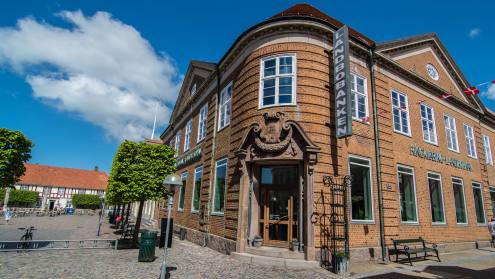Portugal has become an unexpected record breaker. In May 2019, the country’s Public Debt Agency auctioned benchmark 10-year government bonds at a yield of 1.06%, a historic low. Earlier in the year the National Statistics Institute announced that the budget deficit had fallen to 0.5% of gross domestic product (GDP) in 2018, the lowest level since the country returned to democracy 45 years ago.
In April, Eurostat noted that youth unemployment had fallen further in Portugal than in any other eurozone country over the previous 12 months, while over the past three years the overall jobless rate has fallen twice as fast as in the eurozone as a whole, dropping by almost half from 12.1% to about 6.8%. The Portuguese economy grew faster than the eurozone average in both 2017 and 2018, the first time in two decades that this has happened in two consecutive years.
A vote for confidence
Few predicted results like these when the minority Socialist Party government took office in November 2015, vowing to “turn the page on austerity” and gaining majority support in parliament from the radical left and hardline communists. Against the expectations of many, however, prime minister António Costa and finance minister Mário Centeno have shunned expansionist budgets and potential clashes with Brussels in favour of fiscal prudence and a moderate redistribution of government spending.
This has helped restore confidence to a country hit hard by the European debt crisis, causing 10-year bond yields to soar above 16%, and nursing memories of the painful 2011-14 bailout by the EU and the International Monetary Fund.
“Confidence is a key aspect for ensuring that the economy has a sustained growth profile,” says Pedro Castro e Almeida, chief executive of Banco Santander Totta. “The fact that we were able to come from a situation where we had very high public budget deficits to one where we are currently discussing how big the surplus will be in the coming years is a very important driver of confidence.”
Fiscal rigour
Mr Centeno’s commitment to budget discipline has put him at the heart of EU policy-making as president of the Eurogroup, the informal meetings of eurozone finance ministers, and he believes the restoration of fiscal credibility is saving Portugal billions of euros. Falling yields, he says, have saved the state €1.27bn in interest on government debt issues since September 2017, when Standard & Poor’s became the first of the big three rating agencies to lift Portugal above 'junk' status as the economy recovered from the debt crisis.
By December 2018, Fitch and Moody’s had followed suit, and in March 2019 S&P upgraded Portugal a second time, citing the “firm downward path” of its public debt-to-GDP ratio, expected budget surpluses and an outlook for balanced growth of 1.5% to 1.7% over the next few years. The second upgrade was “a clear signal that government financing has returned to normality”, says Mr Centeno. “It will strengthen investor confidence and Portugal’s international credibility and have a direct impact on the cost of family, company and state borrowing.”
The finance minister sees the narrowing of the spreads between the yields of Portuguese government bonds and those of other EU countries as a measure of the extent to which Portugal is catching up. Portugal’s benchmark 10-year yield is currently similar to that of the UK, well below those of Italy and Greece and moving close to that of Spain. “Portugal is paying much less to service its debt than it did three years ago, and much less compared with other countries,” Mr Centeno said recently. “It is this significant decrease in spreads that shows the true success of our convergence [with the rest of Europe].”
His belief in the benefits of fiscal rigour comes amid concerns from some quarters that the Portuguese economy should be growing faster. Aníbal Cavaco Silva, a former centre-right prime minister and president of the country, has warned that Portugal risks becoming the ‘red lantern’ at the rear of the eurozone growth train as eastern and central European countries such as Estonia, Slovakia and Slovenia expand much faster and surpass Portugal in terms of GDP per capita.
Mr Centeno believes the comparison is unfair. He argues that these countries are ahead of Portugal in the economic cycle, with lower debt levels and consolidated public accounts. “Portugal has done much more to reduce unemployment and indebtedness than they have,” he said recently. “If we hadn’t followed this path we would be paying much more to service our debt and it would take much longer to return our public administration to normality.”
Sustainable progress
After a deep recession triggered by the debt crisis, Portugal’s economy began to pick up in 2014, and then expanded by 2.8% in 2017 and 2.1% in 2018, ahead of the average eurozone growth. The government projects a deceleration to growth of 1.9% in 2019 and 2020, as the economic cycle matures, followed by a slight increase to about 2% in the subsequent three years. Slower growth in Portugal’s main trading partners – Spain, France and Germany – together with the potential impact of international trade tensions and Brexit, pose the biggest risks to these forecasts.
The idea that Portugal should be able to achieve a spurt of strong GDP growth and quickly catch up with living standards in the core EU economies has long preoccupied politicians and academics in the country. GDP growth averaged 4.1% a year between 1986, when Portugal joined what is now the EU, and the launch of the euro in 1999. From 2000 to 2012, however, in what has become known as the country’s ‘lost decade’, the Portuguese grew poorer in terms of per capita GDP than US citizens did during the Great Depression of the 1930s, according to Ricardo Reis, an economics professor at the London School of Economics.
“There has been a clear improvement,” says Rui Constantino, chief economist at Santander Totta. “In recent years, Portugal has clearly been growing above its potential growth rate, which we currently estimate at about 1.5%.” This compares with average annual growth of about 0.8% in the first decade of this century.
“Stronger growth would be desirable, but Portugal has some limitations,” says Mr Constantino. These include, he adds, being a mature economy with weak demographic growth and “the limits that a low savings rate places on investment capacity in a country that is not borrowing significantly from abroad”. Corporate deleveraging has led external debt reduction, which in the private sector has fallen from a 2010 peak of 148% of GDP to below 82%.
Paula Carvalho, chief economist at Banco BPI, says Portugal is growing at a slower pace than some of its peers due to the persistence of economic imbalances, as well as comparatively lower levels of business competitiveness and productivity.
“This serves to highlight the fact that, despite clear improvements on several fronts, there is still much work to do,” she says. “For example, although debt levels have declined considerably, they remain higher than the eurozone average, especially in the public sector. External competitiveness has also improved markedly, but recent trade and current account data point to a worsening trend, which should warrant some caution.”
Public debt, which hit a peak of 130.6% of GDP in 2014, fell to 121.5% in 2018, but still remains the third highest in the EU after Greece and Italy. Mr Centeno has targeted a drop to below 100% of GDP within five years in an effort to tackle what the Organisation for Economic Co-operation and Development describes as a debt burden that “still limits the government’s ability to respond to future economic shocks”.
Investing for growth
The crisis forced Portuguese companies to look outwards. Exports that accounted for less than 30% of the GDP in 2006 now represent more than 43%. But, as Ms Carvalho points out, Portugal remains less of an exporter than many similar small economies. “Positive trends such as these need to be reinforced to continue boosting growth potential and to make the economy more resilient,” she says.
Under fire from both left-wing supporters and centre-right opponents for skimping on public investment in order to meet tight fiscal targets, Portugal’s socialist government has pledged to increase state investment by an average of 10% a year over the next five years, reaching about €6.3bn in 2023, up from €4.4bn in 2018.
Over the past five years, public investment in Portugal has been equivalent to about 1.9% of GDP, compared with about 2.7% for the eurozone as a whole. “If this trend is sustained, it could very well weaken potential economic growth, given that public investment is usually a catalyst for private investment,” says Ms Carvalho.
The challenge in both the private and the public sector is to “strengthen investment as a source of improved productivity that will lead to higher and more sustainable growth rates”, says Mr Constantino. “We have reduced the budget deficit and are in the process of cutting the public debt, the two big imbalances that led to the crisis. The focus now must be on continuing to transform the economy through investment, innovation and increased productivity.”












